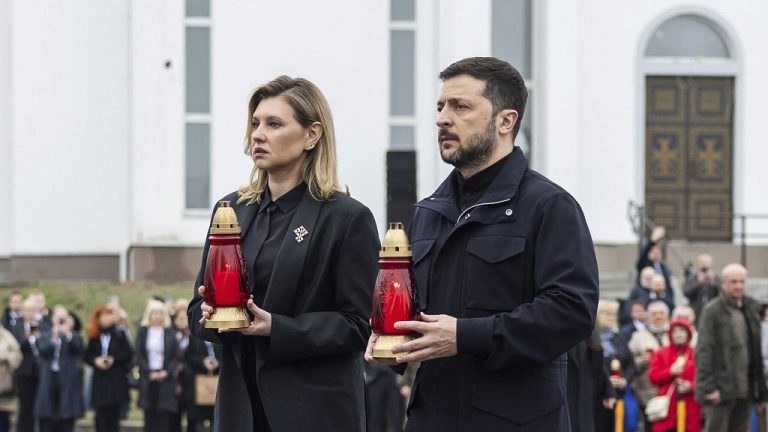Disinformation Campaign Targets Ukraine’s First Lady Olena Zelenska with False Escape Narrative
A sophisticated disinformation operation has emerged, falsely alleging that Olena Zelenska, the First Lady of Ukraine, attempted to flee the country amidst the ongoing conflict. The campaign, disseminated across multiple social media platforms and amplified by pro-Russian accounts, leverages fabricated evidence, manipulated images, and distorted narratives to paint a picture of Zelenska abandoning her country in its time of need. This disinformation campaign not only seeks to undermine the credibility of the Ukrainian government but also aims to sow discord among Ukrainian citizens and erode international support for Ukraine. The fabricated narratives, often presented with a veneer of authenticity through doctored images and fabricated "eyewitness" accounts, prey on public anxieties and exploit the fog of war to spread misinformation effectively.
The core of the disinformation campaign revolves around a manufactured story depicting Zelenska attempting to cross the border into a neighboring country, often Poland or Romania. The narrative is bolstered by manipulated images purporting to show Zelenska at border crossings, often accompanied by fabricated security details. These images are frequently taken out of context or digitally altered to fit the false narrative. The campaign further employs fabricated "leaked documents" and phony "insider information" to lend an air of credibility to its claims. The dissemination strategy involves a coordinated effort across various social media platforms, including Twitter, Facebook, and Telegram, utilizing both automated bot accounts and seemingly authentic user profiles to amplify the message and reach a wider audience.
The timing of this disinformation campaign aligns with intensified fighting in Ukraine and heightened international scrutiny on Russia’s actions. By disseminating this false narrative about Zelenska’s supposed attempt to flee, the orchestrators of the campaign aim to create an impression of disunity and instability within the Ukrainian leadership. This perception of internal fracture can serve to demoralize Ukrainian citizens, weaken international resolve to support Ukraine, and ultimately bolster the pro-Russian narrative that portrays the Ukrainian government as illegitimate and failing. The campaign also subtly reinforces the false Russian pretext for the invasion, attempting to portray the Ukrainian government as abandoning its people.
Experts in disinformation and information warfare point to several indicators that strongly suggest a coordinated and deliberate effort behind this campaign. The rapid and widespread dissemination of the false narrative, the consistent use of similar language and imagery across different platforms, and the involvement of known pro-Russian accounts all point to a concerted disinformation effort. Furthermore, the narrative’s evolution and adaptation to counterfactual information and debunking attempts indicate a degree of sophistication and responsiveness characteristic of orchestrated disinformation campaigns. This adaptability allows the campaign to retain its persuasive power even when confronted with evidence that contradicts its claims.
The Ukrainian government, along with independent fact-checking organizations and social media platforms, has actively worked to debunk the disinformation campaign. Zelenska herself has publicly refuted the claims and emphasized her commitment to remaining in Ukraine alongside her husband, President Volodymyr Zelenskyy. Fact-checking organizations have meticulously analyzed the fabricated evidence, exposing the manipulations and inconsistencies within the narrative. Social media platforms have, to varying degrees, taken steps to remove or label content related to the disinformation campaign, although the sheer volume and rapid spread of the misinformation make it challenging to fully contain.
The case of the disinformation campaign targeting Olena Zelenska serves as a stark reminder of the sophisticated and pervasive nature of information warfare in the digital age. The ability to rapidly create and disseminate fabricated narratives, coupled with the widespread use of social media, allows malicious actors to manipulate public opinion and undermine trust in legitimate sources of information. This incident underscores the critical importance of media literacy, critical thinking, and reliance on verified information sources in navigating the complex information landscape of the 21st century. It also highlights the need for continued efforts by governments, tech companies, and civil society organizations to combat disinformation and protect the integrity of the information ecosystem. The ongoing conflict in Ukraine serves as a tragic case study in the devastating impact disinformation can have on real-world events, and the urgent need for effective countermeasures.


